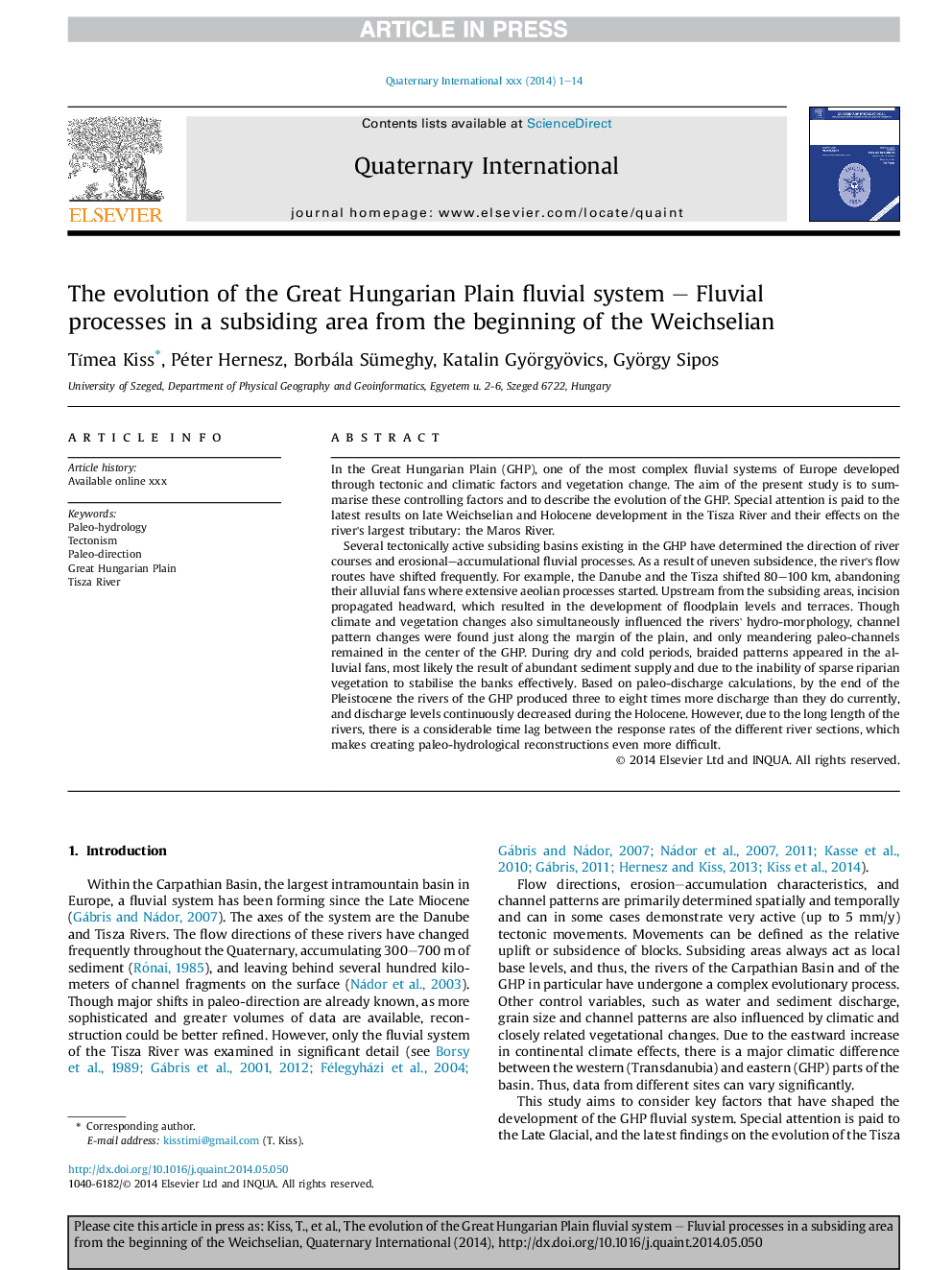| Article ID | Journal | Published Year | Pages | File Type |
|---|---|---|---|---|
| 7451412 | Quaternary International | 2015 | 14 Pages |
Abstract
Several tectonically active subsiding basins existing in the GHP have determined the direction of river courses and erosional-accumulational fluvial processes. As a result of uneven subsidence, the river's flow routes have shifted frequently. For example, the Danube and the Tisza shifted 80-100Â km, abandoning their alluvial fans where extensive aeolian processes started. Upstream from the subsiding areas, incision propagated headward, which resulted in the development of floodplain levels and terraces. Though climate and vegetation changes also simultaneously influenced the rivers' hydro-morphology, channel pattern changes were found just along the margin of the plain, and only meandering paleo-channels remained in the center of the GHP. During dry and cold periods, braided patterns appeared in the alluvial fans, most likely the result of abundant sediment supply and due to the inability of sparse riparian vegetation to stabilise the banks effectively. Based on paleo-discharge calculations, by the end of the Pleistocene the rivers of the GHP produced three to eight times more discharge than they do currently, and discharge levels continuously decreased during the Holocene. However, due to the long length of the rivers, there is a considerable time lag between the response rates of the different river sections, which makes creating paleo-hydrological reconstructions even more difficult.
Related Topics
Physical Sciences and Engineering
Earth and Planetary Sciences
Geology
Authors
TÃmea Kiss, Péter Hernesz, Borbála Sümeghy, Katalin Györgyövics, György Sipos,
